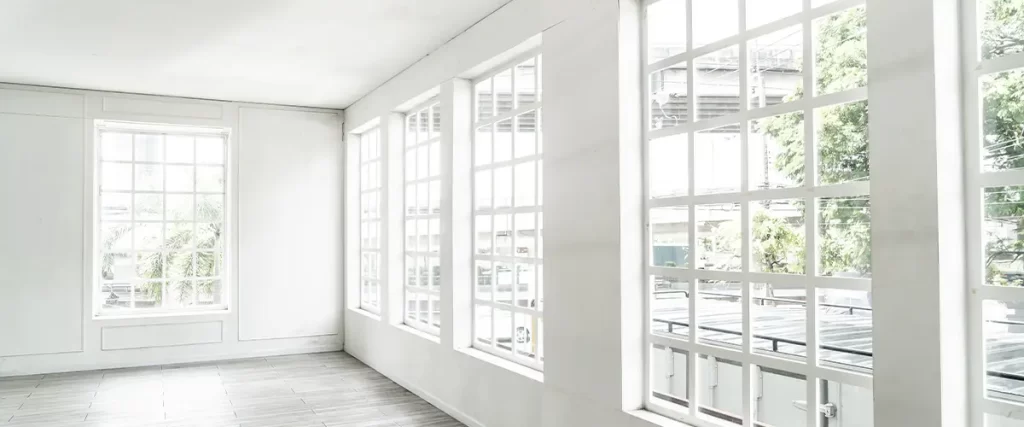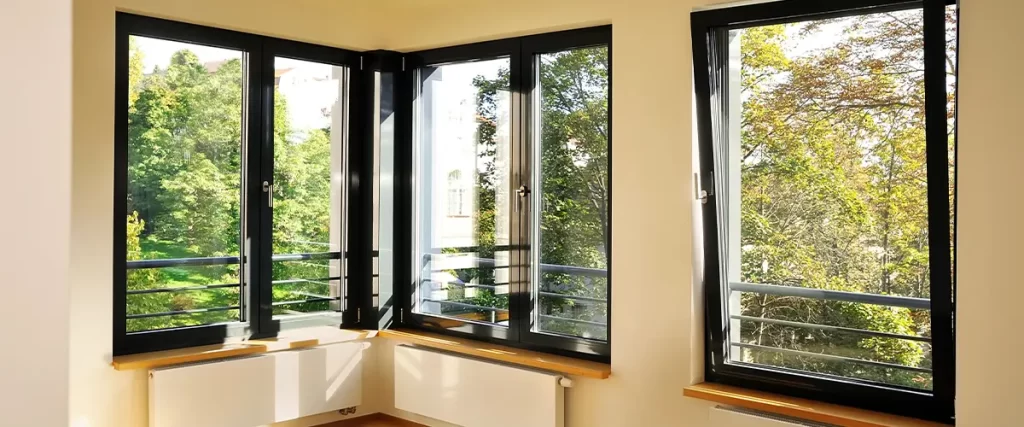Choosing between glass vs acrylic windows can be tough. Glass is a common choice for homeowners, but acrylic offers unique benefits too. This post will compare important factors like warmth, light, and safety to help you decide.
Keep reading to learn more!

Key Takeaways
- Acrylic windows are better at keeping heat in and have good UV resistance without special coatings. They are light, making installation easier, but scratch more easily than glass.
- Glass windows let in a lot of natural light and are stronger against harsh weather. They can be improved with double paning for better insulation but are heavier and harder to install.
- Both materials offer clear views outside. Choosing between them depends on needs like weight, durability, energy efficiency, and safety.
Key Factors to Compare
Comparing glass and acrylic windows involves looking at their thermal conductivity, optical transmission, weight and durability, and scratch resistance. These factors impact which window material may be best suited for specific needs.
Thermal Conductivity
Thermal conductivity is about how well heat passes through a material. Glass windows are not great at stopping heat loss. This means in winter, heat goes out faster, making your home colder.
Acrylic and glass differ here because acrylic has better insulation properties. It keeps the heat inside better than single pane windows made of glass.
Double pane windows or tempered glass can help with this issue for glass options, keeping homes warmer by trapping air or gas between the panes that act as an insulator. On the other hand, acrylic panels naturally resist cold or hot air from passing through easily, which makes them energy efficient choices for places like sunrooms where controlling temperature is important.
Optical Transmission
Optical transmission is about how clear and well windows let light through. Glass windows are known for their excellent optical clarity, making rooms brighter with natural light. Acrylic windows, like plexiglass, also offer great clarity and can be a good choice for letting in sunlight while blocking UV rays.
These materials play a big role in how colors look inside your home.
Both glass and acrylic windows ensure that the view outside stays crisp and vivid.
Acrylic has an advantage because it can be made resistant to UV light without needing special coatings. This keeps furniture and fabrics from fading over time. Homeowners looking for energy efficiency might prefer these options since they reduce heat transfer while keeping homes lit with natural daylight.
Weight and Durability
Transitioning from the topic of optical transmission, we’ll discuss weight and durability next. Glass notably outranks acrylic in weight. As a result, it could pose challenges during handling and installation.
Yet, glass holds a robust stance against severe weather conditions and will resist breaking unless subjected to substantial force.
On the contrary, acrylic windows are characterized by their lightness. This feature simplifies and accelerates the installation process. Despite the lightness, acrylic may be more prone to shattering under lesser force compared to glass but generally exhibits excellent resistance to impacts.
Both choices necessitate proper maintenance for extended durability and present varying advantages fitting to specific homeowners’ requirements.
Scratch Resistance
When considering scratch resistance for windows, it’s important to know that acrylic windows have high scratch resistance compared to glass windows. Acrylic, also known as plexiglass, is highly resistant to scratches due to its durable and shatter-resistant properties.
This makes it a suitable option for areas with harsh weather conditions or where there is a concern for potential scratching. Furthermore, acrylic windows can maintain their clarity and transparency over time despite being exposed to external elements, making them a reliable choice for homeowners seeking durability and low-maintenance window options.
Glass windows may be scratched more easily than acrylic ones due to the nature of the material. Although some types of glass can be treated with coatings or laminates to improve scratch resistance, they may not match the level of scratch resistance offered by acrylic.
For homeowners looking for a window material that offers better protection against scratches in the long run, especially in high-traffic areas or locations susceptible to damage from outdoor elements, acrylic stands out as a practical choice.

Pros and Cons of Glass Windows
Glass windows have timeless appeal and various benefits but also come with drawbacks. Here are the pros and cons of glass windows:
Pros:
- Excellent optical transmission allowing maximum natural light into the home.
- High thermal conductivity, providing better insulation and energy efficiency.
Cons:
- Prone to shattering on impact, posing safety hazards.
- Heavier than acrylic, making them more challenging to install and replace.
Pros and Cons of Acrylic Windows
Acrylic windows offer high impact resistance and are lightweight. They provide good insulation and are shatter-resistant. Here are the pros and cons of acrylic windows:
- Lightweight material: Acrylic is lighter than glass, making it easier to handle during installation.
- Shatter resistant: Acrylic has high impact resistance, reducing the likelihood of breakage.
- Good insulation: Acrylic provides better thermal insulation than glass, helping to maintain indoor temperature.
- Scratch resistance: Acrylic is prone to scratches compared to glass, requiring more maintenance.
- Lower optical transmission: Compared to glass, acrylic has lower optical clarity and may appear less transparent in certain applications.
These factors should be considered for choosing the right window material for your home needs.

Ideal Applications for Glass and Acrylic Windows
Glass windows are an outstanding choice for homeowners seeking to enhance the aesthetics of their homes. They offer exceptional optical transmission, making them ideal for spaces that require abundant natural light, such as sunrooms and living rooms.
Additionally, laminated glass windows provide superior noise reduction, creating a peaceful indoor environment. On the other hand, acrylic windows are a budget-friendly option suitable for those looking for cost-effective solutions without compromising on quality.
They are scratch-resistant and lightweight, making them perfect for applications where durability and weight are crucial factors like replacement windows.
In terms of design options in window installation, both acrylic and glass windows offer a range of possibilities tailored to diverse needs. For example, plexiglass windows can be tinted to provide UV resistance and customized to fit specific design requirements in various home settings such as noise reduction needs in urban environments or UV protection in sunny areas.
Continuing our discussion from the advantages and disadvantages of Glass vs Acrylic Windows…
Best Manufacturers of Windows
When choosing windows, selecting a reputable manufacturer ensures quality, durability, and advanced design tailored to your needs.
- Andersen Windows: Known for energy-efficient designs, wide material options, and innovative technology for optimal home performance.
- Pella Windows: Offers customizable designs with a variety of materials and a focus on premium craftsmanship and energy efficiency.
- Milgard Windows: Provides high-quality, affordable options known for durability and lifetime warranties on many of their products.
- Marvin Windows: Renowned for sophisticated designs and advanced performance technology to enhance modern architectural aesthetics.
FAQs – Glass vs Acrylic Windows
1. What are the differences between glass and acrylic windows?
Glass and acrylic, or polymethyl methacrylate, are two materials often used for windows. Glass is scratch-resistant while acrylic is a more budget-friendly option.
2. Which one is better for sunroom windows, glass or acrylic?
The choice between glass and acrylic for sunroom windows depends on many factors. If you prefer a scratch-resistant window that requires proper care, then go with glass. However, if you’re looking for a budget-friendly option that’s typically lighter in weight, then acrylic could be your ideal material.
3. Are there any special considerations when choosing between these two materials?
Yes! The layers of your window can affect which material might be a better fit. For instance, double-paned glass offers superior insulation compared to single-layered acrylic.
4. Is it true that many homeowners prefer one over the other?
Many homeowners may have personal preferences based on their specific needs such as budget constraints or aesthetic choices which influence whether they choose either glass or an alternative like plastic-based polymethyl methacrylate (acrylic).
5. Can I switch from one type of window to another easily?
Typically switching from one type of window material to another involves replacing entire frames which can be costly and time-consuming; therefore it’s essential to consider all factors before making this decision.

Trust the Experts for Professional Results
Our team has years of experience in this service, ensuring top-tier results. Work with the best to save money long-term. Contact us today at (402) 983-9200 to begin!
